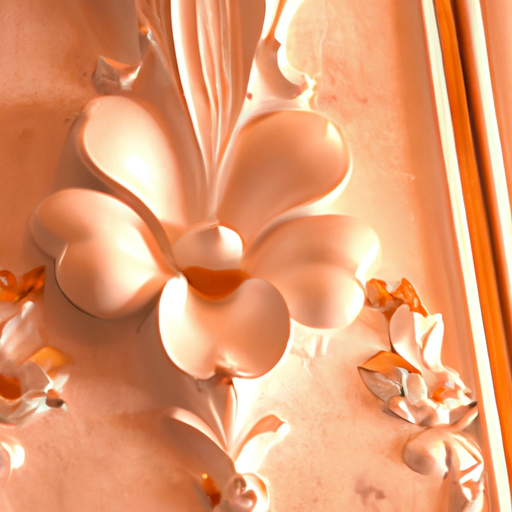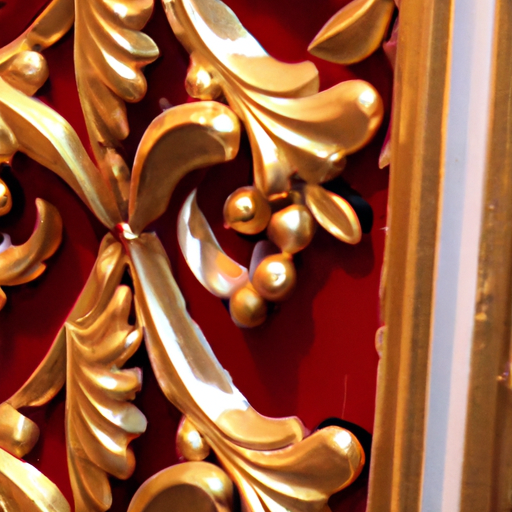
-
Table of Contents
- Ornate Elements: Bringing Rococo into Modern Design
- The Allure of Rococo
- Rococo in Modern Design
- 1. Accent Pieces
- 2. Wallpaper and Textiles
- 3. Architectural Details
- 4. Modern Rococo Fusion
- Case Studies: Successful Rococo Integration
- 1. The Palace of Versailles
- 2. The Hôtel de Crillon, Paris
- The Future of Rococo in Modern Design
- Conclusion
Ornate Elements: Bringing Rococo into Modern Design

The Rococo style, characterized by its intricate ornamentation and lavishness, emerged in the 18th century as a reaction against the strictness of the Baroque era. While Rococo design flourished during its time, it eventually fell out of favor, giving way to more minimalist and functional styles. However, in recent years, there has been a resurgence of interest in Rococo elements in modern design. This article explores the reasons behind this revival and how designers are incorporating Rococo into contemporary spaces.
The Allure of Rococo
Rococo design is known for its opulence, elegance, and attention to detail. It embraces curves, asymmetry, and delicate motifs inspired by nature. The style often features ornate furniture, gilded accents, and elaborate wall and ceiling decorations. Despite its historical origins, Rococo continues to captivate designers and homeowners alike for several reasons:
- Emotional Appeal: Rococo design evokes a sense of romance, luxury, and indulgence. Its ornamental details create a visually rich and immersive experience, transporting individuals to a bygone era.
- Contrast to Minimalism: In a world dominated by minimalism and clean lines, Rococo offers a refreshing departure. Its intricate details and abundance of decoration provide a counterpoint to the simplicity of modern design.
- Expressing Individuality: Rococo allows individuals to express their unique personalities and tastes. By incorporating ornate elements into their spaces, they can create a sense of personal style and make a bold statement.
Rococo in Modern Design
While Rococo design may seem incompatible with the clean lines and simplicity of modern design, many designers have successfully integrated Rococo elements into contemporary spaces. By carefully selecting and adapting Rococo features, they create harmonious and visually striking interiors. Here are some examples of how Rococo is being brought into modern design:
1. Accent Pieces
One way to incorporate Rococo into modern design is by using accent pieces inspired by the style. For example, a modern living room with a minimalist sofa and coffee table can be enhanced with a Rococo-inspired mirror or a chandelier. These ornate elements serve as focal points and add a touch of glamour to an otherwise understated space.
2. Wallpaper and Textiles
Rococo patterns and motifs can be introduced through wallpaper and textiles. A modern bedroom can be transformed with a Rococo-inspired wallpaper featuring delicate floral patterns or intricate scrollwork. Similarly, upholstery fabrics with Rococo motifs can be used to add visual interest to chairs or cushions.
3. Architectural Details
Rococo architectural details, such as moldings, can be incorporated into modern spaces to create a sense of grandeur. For example, a minimalist dining room can be enhanced with a ceiling adorned with Rococo-inspired plasterwork. These details add depth and texture to the space, elevating its overall aesthetic.
4. Modern Rococo Fusion
Some designers have taken a bolder approach by fusing Rococo elements with modern design principles. This fusion creates a unique and eclectic style that combines the best of both worlds. For instance, a modern kitchen can feature sleek cabinets and countertops while incorporating Rococo-inspired handles or a decorative range hood.
Case Studies: Successful Rococo Integration
Several notable examples demonstrate the successful integration of Rococo elements into modern design:
1. The Palace of Versailles
The Palace of Versailles, a prime example of Rococo architecture, has inspired countless modern interiors. Designers often draw inspiration from its ornate ceilings, gilded furniture, and intricate tapestries. By incorporating similar elements, they create spaces that exude luxury and elegance.
2. The Hôtel de Crillon, Paris
The Hôtel de Crillon, a historic hotel in Paris, underwent a renovation that successfully blended Rococo elements with contemporary design. The hotel’s interior features modern furniture and fixtures alongside ornate moldings, chandeliers, and wall coverings. This fusion creates a visually stunning and harmonious environment.
The Future of Rococo in Modern Design
The resurgence of interest in Rococo elements suggests that the style has a place in modern design. As designers continue to experiment and push boundaries, we can expect to see more innovative ways of incorporating Rococo into contemporary spaces. Additionally, advancements in technology and manufacturing techniques make it easier to recreate intricate Rococo details, allowing for greater accessibility and affordability.
Conclusion
Rococo design, with its ornate elements and lavishness, is making a comeback in modern interiors. Its emotional appeal, contrast to minimalism, and ability to express individuality have contributed to its resurgence. Designers are successfully integrating Rococo elements into contemporary spaces through accent pieces, wallpaper, textiles, architectural details, and modern Rococo fusion. Notable examples, such as the Palace of Versailles and the Hôtel de Crillon, demonstrate the successful integration of Rococo into modern design. As the interest in Rococo continues to grow, we can expect to see more innovative and exciting applications of this style in the future.
